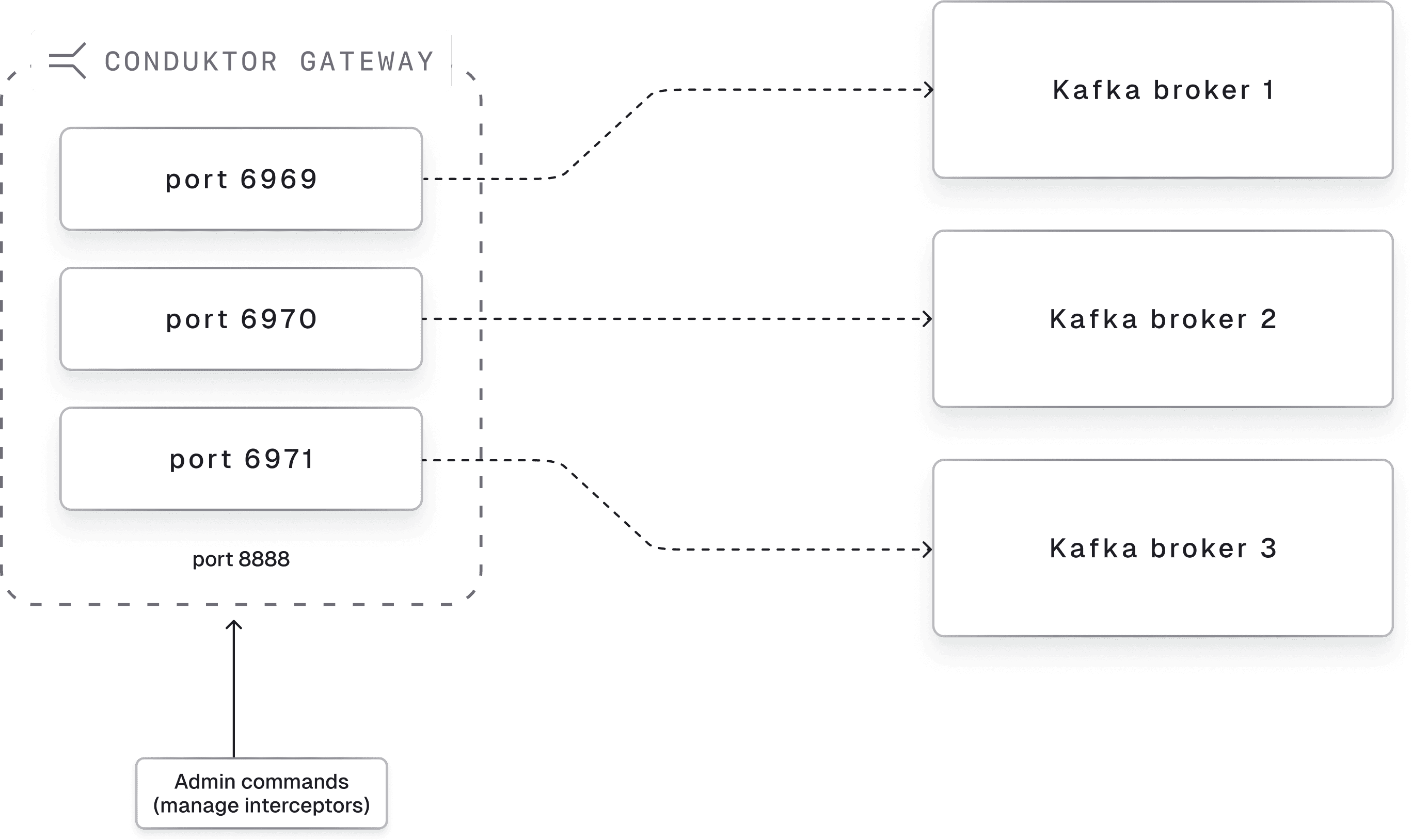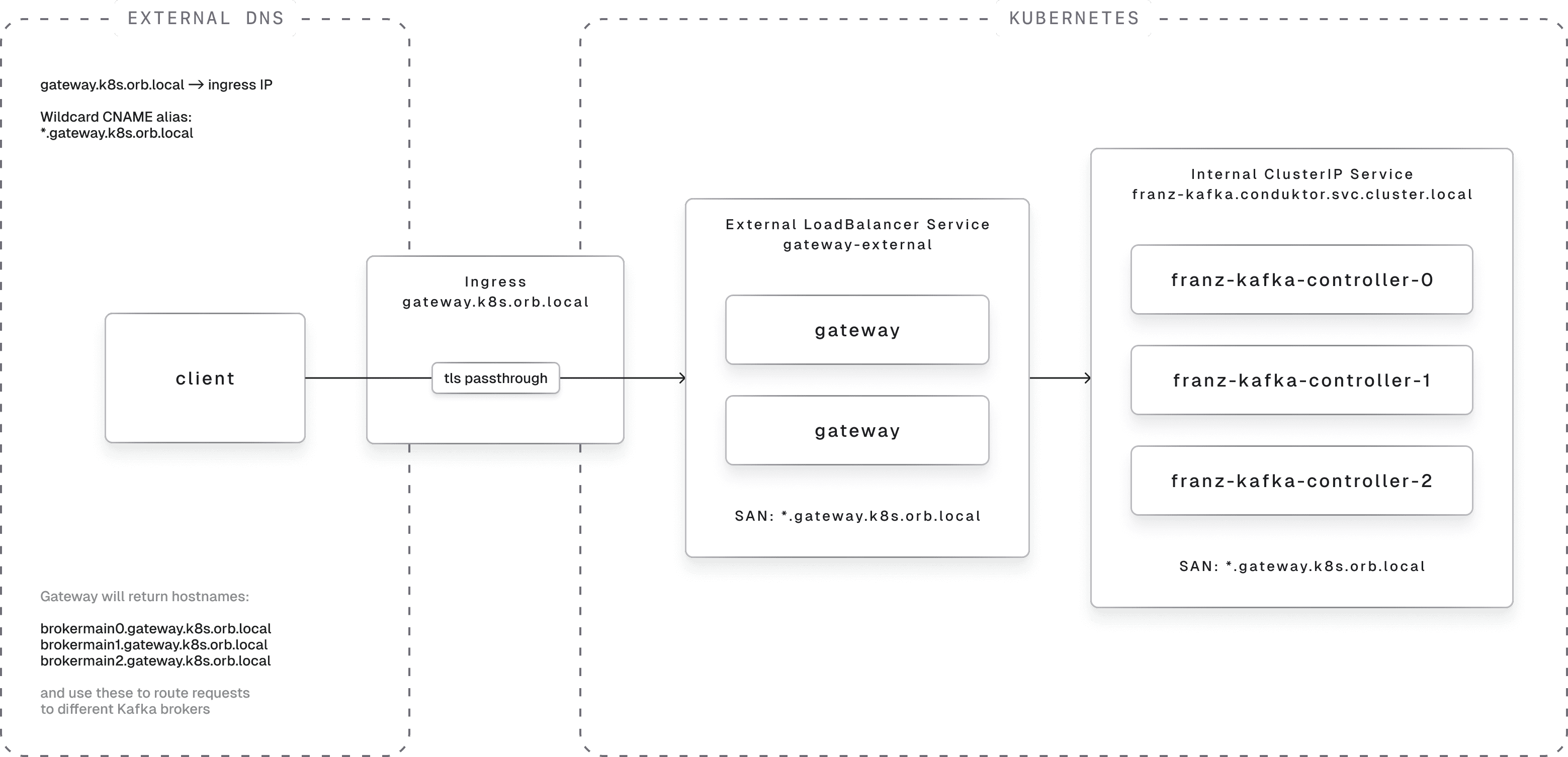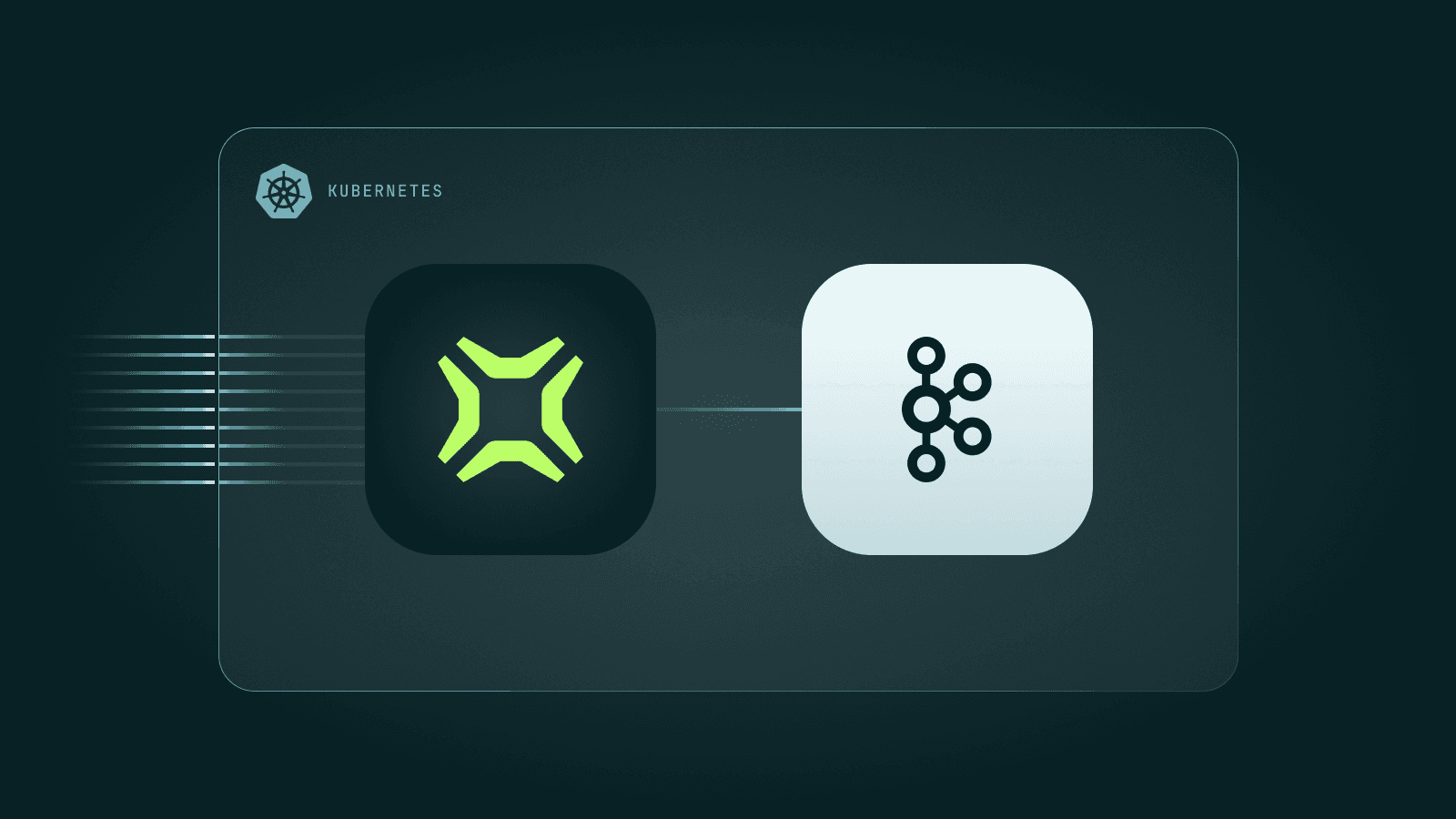Explore Conduktor's setup for SNI routing in Kubernetes, including concepts like field-level encryption and policy enforcement. Ideal for secure Kafka management.
5 nov. 2024
Video Walkthrough
Here is a full walkthrough tutorial.
Introduction and Concepts
Conduktor is a Kafka protocol proxy with an extensive catalog of interceptor plugins to centrally enforce policies like
schema payload validation
business rule validation
field-level encryption and field-level decryption
client configuration overrides
many more!
The default way Conduktor routes traffic to Kafka brokers is with port-based routing. Each Gateway instance opens a port for each broker.

However, this can cause complications when the number of brokers changes. Gateway is happy to automatically expose more ports, but firewalls and load balancer targets would require reconfiguration. This is especially problematic when using a managed Kafka service where the number of brokers can change without warning.
One way to solve this is with host-based routing, also known as Server Name Indication (SNI) routing. SNI routing allows Gateway expose a single port and route requests to individual brokers based on hostname rather than port (see SNI routing guide in the docs for more information).
This tutorial sets up SNI routing specifically for a Kubernetes cluster that exposes Gateway to clients externally via an Ingress. Kubernetes has its own networking concepts, so it is helpful to see an example for how SNI routing works for Conduktor Gateway deployed on Kubernetes specifically.
Here is an overview of what we will deploy:

Setup
To run this all locally, I will use OrbStack, a container and VM management tool for Mac only (sorry!). I chose OrbStack specifically because this tutorial aims to show how external clients will connect via an Ingress Controller, which can otherwise be difficult to do without either running up a cloud bill or sacrificing authenticity compared to a real-world deployment. OrbStack has some networking magic that makes the entire tutorial run locally without sacrificing authenticity.
Install homebrew at https://brew.sh/.
Install
helmandorbstackand a few other things.
Helm is a package manager for Kubernetes.
Orbstack is a management system for containers and Linux VMs that makes it convenient to run Kubernetes locally, among other things.
Openjdk is a Java runtime. This is required to use the keytool command to generate keystores and truststore for certificates, as well as Kafka CLI tools. You may need to add it to your PATH in your shell profile for the shell to properly locate and execute the program. For example, add the following line to your ~/.zshrc profile:
Prepare Certificates
This example will generate certificates that will be used by Kafka brokers and Gateway instances to establish secure connections using TLS.
This example will use TLS (formerly known as SSL) to encrypt data in transit between:
between Kafka clients and Conduktor Gateway
between Conduktor Gateway and Kafka
Run the following script to generate the keystores and truststore.
Inspect the certificates for various services. For example, inspect the gateway certificate.
IMPORTANT: Notice the Subject Alternate Names (SAN) that allow Gateway to present various hostnames to the client. This is crucial for hostname-based routing, also known as Server Name Indication (SNI) routing. Kafka clients need to know which particular broker or brokers they need to send requests to. Gateway impersonates brokers by presenting various hostnames to the client -- for example, brokermain0.gateway.k8s.orb.local to present to the client as the broker with id 0. The client first needs to trust that the certificate presented by Gateway includes that hostname as a SAN, otherwise TLS handshake will fail. The client then makes its request to brokermain0.gateway.k8s.orb.local. Gateway receives this request and uses the SNI headers to understand that it needs to forward the request to the Kafka broker with id 0. The * wildcard allows for brokers to be added or removed without any changes to certificates, DNS, port security rules, or load balancer targets. If broker 4 is added, requests to that broker will be routed just like for broker 0 without needing to update any infrastructure configuration.
(Optional) Inspect the
generate-tls.shscript to see how it
Creates a certificate authority (CA)
Creates a CA cert
Uses the CA cert to create service certificates for Kafka and Conduktor Gateway
Constructs Subject Alternate Names (SANs) to allow Gateway to present to clients as any broker.
Creates a truststore that clients can use to validate the identity of any service's certificate that has been signed by the CA
Deploy
Deploy Kafka and Gateway.
A lot happens here:
Create shared namespace
conduktorCreate kubernetes secrets for Kafka
Create kubernetes secrets for Gateway
Install Kafka via Bitnami's Kafka helm chart
Install Gateway via Conduktor's helm chart
Install
ingress-nginxIngress ControllerCreate Ingress for Gateway
Inspect the start script, helm values, and ingress definition.
Connect to Gateway
Connect to the admin API (no output with no errors means it worked!).
Or equivalent REST API call, which should receive a successful response with an empy list.
In newer JDKs, Java clients need to run with this env var set (see KIP 1006):
You can also add -Djavax.net.debug=ssl to enable ssl debug messages.
Look at metadata returned by Kafka.
NOTE: The above uses a bit of OrbStack magic to reach an internal service from your laptop. Usually you would only be able to reach an internal service from a pod within the kubernetes cluster.
Look at metadata returned by Gateway, accessed externally.
NOTE: OrbStack allows you to reach external services using the *.k8s.orb.local domain via Ingress Controller.
Create a topic (going through Gateway).
List topics (directly from Kafka).
List topics (going through Gateway).
Produce to the topic (going through Gateway).
Consume from the topic (going through Gateway).
Cleanup
Clean up kubernetes resources.
Or for convenience,
Takeaways
Your Ingress Controller must support layer 4 routing (TCP, not HTTP) with TLS-passthrough.
For AWS EKS this would mean using the Load Balancer Controller with Network Load Balancer (NLB).
TLS passthrough is required so that Gateway can use the SNI headers in the TLS handshake to route requests to specific brokers.
Your client must be able to resolve all hosts advertised by Gateway to the external load balancer. In this example, OrbStack magically points all
*.k8s.orb.localto the ingress-nginx Ingress Controller, and the Ingress we defined points these hosts to thegateway-externalservice:gateway.k8s.orb.localbrokermain0.gateway.k8s.orb.localbrokermain1.gateway.k8s.orb.localbrokermain2.gateway.k8s.orb.localAs brokers are added, any
brokermain<broker id>.gateway.k8s.orb.localwill be routed automatically without requiring changes elsewhere in the infrastructure.
Gateway's TLS certificate must include SANs so that it can be trusted by the client when it presents itself as different brokers. Wildcard SAN is easiest, which in this example is
*.gateway.k8s.orb.local.Since we are using an external load balancer, we do not need to use Gateway's internal load balancing mechanism. The external load balancer will distribute load.
Appendix
kcat commands
The interaction between kcat and OrbStack's ingress controller is a bit buggy. Connections often drop.







